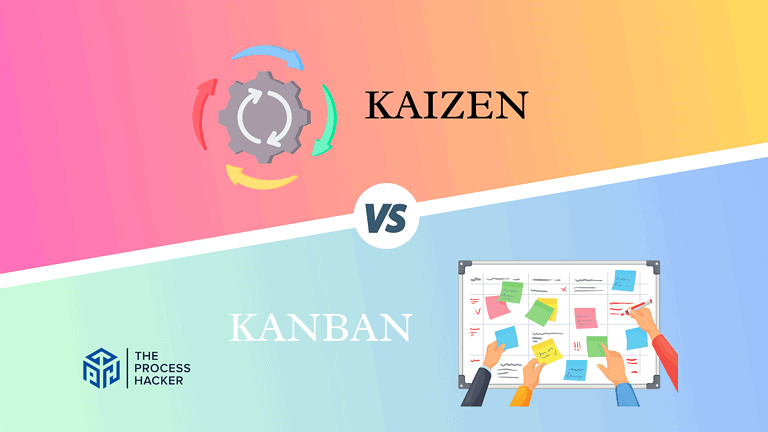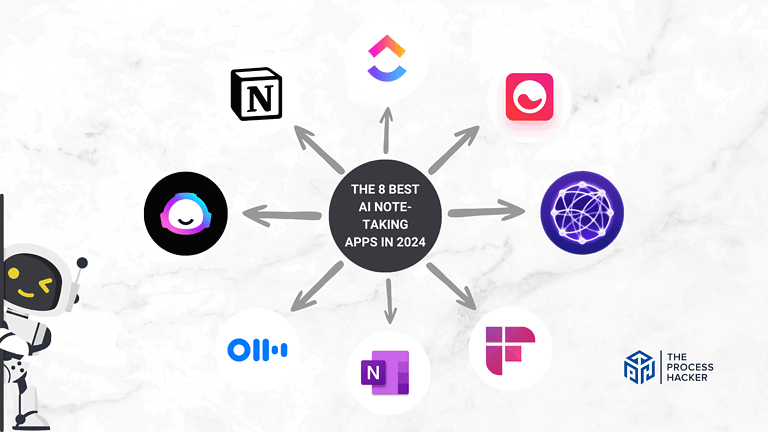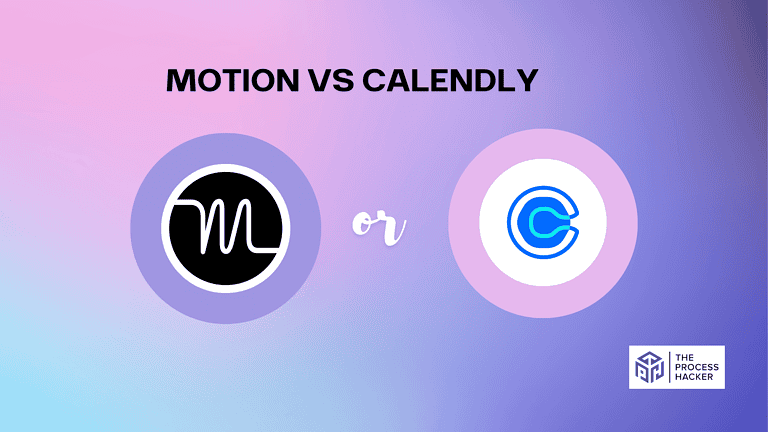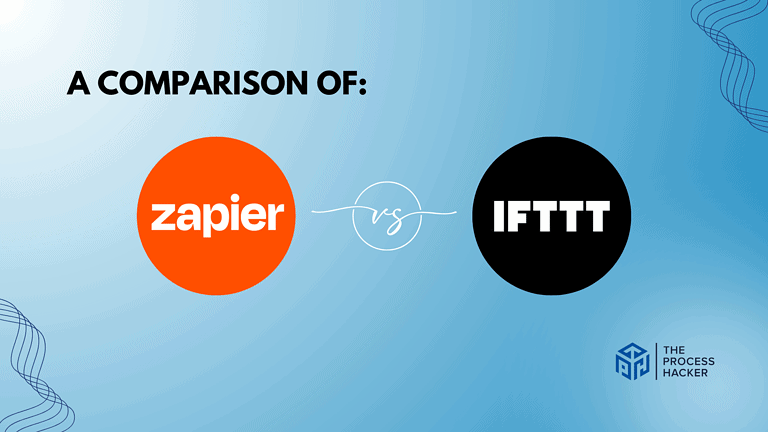10 Critical Cybersecurity Challenges Businesses Face in 2024
Did you know that 43% of cyberattacks target small businesses, but only 14% are prepared to defend themselves?
As a business leader, you’re undoubtedly aware of the growing threat landscape in cyberspace. But are you truly prepared for the sophisticated attacks that could compromise your sensitive data and disrupt your operations?
Imagine having a robust cybersecurity strategy that protects your business from current threats and anticipates future challenges. By understanding and addressing the most pressing cybersecurity issues, you can safeguard your company’s future and gain a competitive edge.
This comprehensive guide will explore the 10 most pressing cybersecurity threats facing businesses in 2024 and provide actionable insights to strengthen your security posture. Let’s dive in and ensure your business stays ahead of cybercriminals!
Why is Cybersecurity Important for Small Businesses?
Cybersecurity is crucial for small businesses, perhaps even more so than for larger corporations. While big companies often have substantial resources dedicated to cybersecurity, small businesses frequently lack the same level of protection, making them attractive targets for cybercriminals. The consequences of a cyberattack can be devastating for a small business, potentially leading to financial losses, damaged reputation, and even closure.
Many small business owners mistakenly believe they’re too small to be targeted, but in reality, cybercriminals often view them as low-hanging fruit. A single data breach can result in the loss of sensitive customer information, intellectual property, and financial data. Moreover, small businesses that are part of a larger supply chain can become entry points for attacks on bigger organizations.
By prioritizing cybersecurity, small businesses not only protect themselves but also build trust with customers and partners, potentially gaining a competitive advantage in their market. Implementing basic security systems and measures, such as regular software updates, employee training, and robust password policies, can significantly reduce the risk of a successful cyberattack.
For businesses lacking in-house expertise, working with consultants in cybersecurity can provide valuable guidance and support in developing and implementing effective security strategies. By taking these steps, small businesses can ensure their longevity and success in an increasingly digital world.
1) The Rise of Ransomware
Ransomware attacks have become a pervasive and costly threat to businesses worldwide. These malicious software attacks encrypt critical data, rendering it inaccessible until a ransom is paid. The financial implications of ransomware can be devastating, not to mention the potential damage to a company’s reputation and customer relationships.
The Evolution of Ransomware Attacks
Ransomware isn’t just about locking up your files anymore. It’s become a sophisticated, multi-pronged threat that can cripple your business from multiple angles.
Attackers constantly refine their tactics, finding new ways to exploit vulnerabilities and maximize profits. Let’s take a closer look at some of the recent trends in ransomware attacks:
Double Extortion
This tactic adds an extra layer of pressure on victims. Attackers encrypt your data and steal it before deploying the ransomware. They then threaten to publicly release or sell this sensitive information if you refuse to pay the ransom. It’s a double whammy that can severely damage your reputation and customer trust, even if you manage to recover your data from backups.
A recent high-profile example of double extortion was the cyber attack on Colonial Pipeline. The attackers stole 100 gigabytes of data before encrypting the company’s systems.
Supply Chain Cybersecurity Attacks
Instead of directly targeting individuals or small businesses, cybercriminals are increasingly going after software vendors and managed service providers.
By compromising these trusted entities, they can distribute ransomware through legitimate updates, simultaneously gaining access to a vast network of victims. The Kaseya VSA attack in 2021 is a stark reminder of the devastating impact of supply chain attacks, which affect thousands of businesses worldwide.
Ransomware-as-a-Service (RaaS)
Think of this as the “Uber” of ransomware. Cybercriminal groups develop and maintain ransomware and then lease it out to less technically skilled individuals who conduct the attacks.
This business model significantly lowers the barrier to entry for aspiring cybercriminals, leading to a surge in ransomware attacks. Groups like REvil and DarkSide have operated successful RaaS operations, fueling a wave of attacks across various industries.
Targeting Critical Infrastructure
Hospitals, energy companies, and other critical infrastructure providers have become prime targets. These organizations often have outdated systems and limited cybersecurity resources, making them vulnerable to attacks.
Moreover, disrupting essential services can create widespread panic and pressure victims to pay the ransom quickly. The attack on the Irish Health Service Executive in 2021 demonstrated the severe consequences of targeting critical infrastructure, causing significant disruption to healthcare services.
Protecting Your Business from Ransomware
Don’t let ransomware catch you off guard. While the threat is real, you’re not powerless against it. A proactive, multi-layered defense strategy can significantly reduce your risk. Remember, it’s not just about technology; it’s about empowering your people to be part of the solution. Here’s what you need to do:
- Employee Education: Train employees to recognize and avoid phishing emails, malicious attachments, and other social engineering attacks.
- Security Awareness: Foster a culture of cybersecurity awareness for small businesses or within your organization, emphasizing the importance of vigilance and best practices.
- Multi-Factor Authentication (MFA): Implement MFA for all accounts, especially those with access to sensitive data.
- Regular Software Updates: Keep all operating systems, applications, and up-to-date software to patch vulnerabilities that attackers may exploit.
- Network Segmentation: Isolate critical systems and data from the rest of your network to limit the spread of ransomware.
Implementing Robust Backup and Recovery Solutions
Think of backups as your insurance policy against ransomware. They’re your lifeline when disaster strikes. But don’t just settle for any backup solution. You need one that’s robust, reliable, and regularly tested. Ensure your backups are stored in a secure location, ideally offline or in an immutable cloud environment, where attackers can’t tamper with them.
Remember, the goal isn’t just to have backups; it’s to be able to restore your operations swiftly and seamlessly if you fall victim to an attack. Regularly test your recovery procedures so you’re not caught off guard when it matters most. Consider it a fire drill for your data – you want to know everyone knows the escape route and can execute it flawlessly.
In addition to a robust backup strategy, staying aware of the cybersecurity vulnerabilities associated with your software applications is crucial. Integrating these approaches will allow proactive identification and mitigation of code-level vulnerabilities before deployment, alongside detecting runtime issues post-deployment.
2) Supply Chain Vulnerabilities
The interconnected nature of modern businesses has introduced a new cybersecurity challenge: supply chain vulnerabilities. Attackers increasingly target weaker links within a company’s supply chain to gain access to their ultimate target. This approach can be particularly devastating, as it often allows attackers to bypass traditional security measures and infiltrate multiple organizations simultaneously.
Understanding the Risks in Your Supply Chain
Your supply chain is only as strong as its weakest link. Understanding the risks associated with your suppliers and partners is crucial in safeguarding your business. This involves identifying potential vulnerabilities within their systems and processes and assessing their cybersecurity practices and incident response capabilities.
Mitigating Supply Chain Attacks
Protecting against supply chain attacks requires a proactive and collaborative approach. You must establish clear security expectations with your suppliers and ensure they adhere to industry best practices. Regularly monitoring and assessing their security posture is crucial in identifying and addressing emerging risks.
Conducting Thorough Vendor Risk Assessments
A comprehensive vendor risk assessment can provide valuable insights into your suppliers’ security practices. This process involves evaluating their cybersecurity policies, procedures, and technologies to identify potential weaknesses and ensure they align with your own security standards.
3) The Growing Threat of Phishing Attacks
Phishing attacks have become increasingly sophisticated, making them harder to detect and avoid. Attackers now use highly targeted and personalized emails, often leveraging information gathered from social media or other public sources to create convincing messages. They also employ techniques such as spear phishing, which targets specific individuals or departments within an organization.
Sophisticated Phishing Techniques
Let’s look at some examples of these sophisticated tactics:
Hyper-Personalized Emails
Gone are the days of generic phishing emails riddled with grammatical errors. Attackers now meticulously craft messages that appear to come from trusted sources within your organization, such as your CEO or IT department. They might reference recent company events, projects you’re working on, or even personal details gleaned from your social media profiles to make their requests seem legitimate.
Spear Phishing
This highly targeted form of phishing focuses on specific individuals or departments within your company. Attackers research their targets thoroughly, gathering information about their roles, responsibilities, and relationships within the organization. They then use this knowledge to craft relevant and urgent emails, increasing the likelihood of a successful attack.
For example, an attacker might impersonate a senior executive and request a wire transfer from the finance department or pose as a colleague needing urgent access to a sensitive document.
Business Email Compromise (BEC)
BEC attacks involve compromising a legitimate business email account to conduct fraudulent activities. Attackers might use phishing or other techniques to access an employee’s email account and then send requests for payments, sensitive information, or other actions that benefit the attacker. These attacks can be complicated to detect because they originate from a trusted source.
Smishing and Vishing
Phishing isn’t limited to email anymore. Attackers also use SMS messages (smishing) and phone calls (vishing) to trick people into divulging sensitive information or downloading malware. These attacks often prey on people’s sense of urgency or fear, using tactics such as fake security alerts or claims of suspicious activity on their accounts.
Educating Your Employees
Your employees are your first line of defense against phishing attacks. Educating them about the latest phishing techniques and how to identify suspicious emails is essential. Regular training sessions and simulated phishing exercises can help them develop the skills and awareness needed to avoid falling victim to these scams.
Utilizing Advanced Email Filtering
While employee education is crucial, technology can also play a significant role in mitigating phishing risks. Advanced email filtering solutions can help identify and block suspicious emails before they reach your employees’ inboxes. These solutions often use machine learning and other advanced technologies to detect subtle cues that may indicate a phishing attempt.
4) Cloud Security Concerns
Cloud computing offers numerous benefits to businesses, including scalability, flexibility, and cost savings. However, it also introduces unique security challenges that organizations must address to protect their data and applications in the cloud. As more businesses migrate to the cloud, ensuring robust cloud security becomes increasingly critical.
The Challenges of Securing Cloud Environments
Securing cloud environments can be complex due to several factors. The shared responsibility model, where cloud providers and customers share security responsibilities, can lead to confusion and gaps in protection. Additionally, the dynamic nature of cloud environments, with resources being provisioned and de-provisioned on-demand, can make it challenging to maintain consistent security controls.
Best Practices for Cloud Security
To ensure the security of your cloud environments, you need to adopt a proactive and comprehensive approach. This includes implementing strong access controls, encrypting sensitive data, regularly monitoring for suspicious activity, and conducting periodic security assessments. Choosing a reputable cloud provider with a proven security and compliance track record is also essential.
Implementing Cloud Access Security Brokers (CASBs)
Cloud Access Security Brokers (CASBs) can provide additional security for your cloud environments. These solutions offer visibility into cloud usage, enforce security policies, and protect against data loss and cyber security threats. CASBs can be particularly helpful in managing the complexity of multi-cloud environments and ensuring consistent security across different cloud platforms.
5) The Internet of Things (IoT) Security Risks
The proliferation of Internet of Things (IoT) devices has created a vast and interconnected network of smart devices, from smart homes and wearables to industrial sensors and connected cars. While these devices offer convenience and efficiency, they also present significant security risks. Many IoT devices lack robust security features, making them vulnerable to cybercriminals’ exploitation.
For instance, many inexpensive smart home devices, like security cameras or smart plugs, might ship with default passwords that are easily guessed or publicly known. This allows hackers to quickly gain control of these devices, potentially using them to spy on users, steal data, or launch attacks on other connected systems.
The Expanding Attack Surface of IoT Devices
IoT devices’ sheer number and variety significantly expand businesses’ attack surface. Each connected device represents a potential entry point for attackers to access your network and sensitive data. Moreover, many IoT devices are designed with limited processing power and storage, making it challenging to implement strong security measures.
Securing Your IoT Ecosystem
Securing your IoT ecosystem requires a multi-faceted approach. This includes carefully selecting IoT devices with built-in security features, regularly updating firmware and software, and implementing strong authentication and access controls. It’s also crucial to segment your IoT network from your critical business systems to limit the potential impact of a breach.
Segmenting IoT Networks
Network segmentation is a key strategy for mitigating IoT security risks. By isolating IoT devices on a separate network segment, you can limit their access to sensitive data and critical systems. This approach helps contain the potential damage of a breach and prevents attackers from using compromised IoT devices as a stepping stone to access other parts of your network.
6) The Shortage of Cybersecurity Professionals
Cybersecurity requires various technical and soft skills, from network security and threat intelligence expertise to communication and problem-solving abilities. Unfortunately, the demand for these skills far outstrips the available supply, creating a significant skills gap. This shortage of qualified professionals makes it easier for businesses to build and maintain effective cybersecurity teams.
7) The Increasing Sophistication of Cyberattacks
Cyber attacks are becoming more sophisticated and evasive, making it increasingly difficult for businesses to detect and prevent them. Attackers constantly develop new techniques and tools to bypass traditional security measures, leaving organizations vulnerable to data breaches and other cyber threats.
Advanced Persistent Threats (APTs)
Advanced Persistent Threats (APTs) are a particularly concerning type of cyberattack. Nation-states or well-funded criminal organizations often carry out these highly targeted and stealthy attacks. APTs can remain undetected for long periods, allowing attackers to gather sensitive information or cause significant damage before being discovered.
Proactive Threat Hunting
To combat the increasing sophistication of cyberattacks, businesses must adopt a proactive approach to threat detection and response. Proactive threat hunting involves actively searching for signs of compromise within your network rather than waiting for an attack. This approach can help you identify and mitigate threats before they cause significant damage.
Leveraging Artificial Intelligence (AI) for Threat Detection
Artificial intelligence (AI) and machine learning can be crucial in proactive threat hunting and detection. These technologies can analyze vast amounts of data to identify patterns and anomalies that may indicate a cyberattack.
8) Remote Work Security Challenges
The shift towards remote work has brought numerous benefits, such as increased flexibility and productivity against outsider and insider threats. However, it has also introduced new security challenges for businesses. With employees accessing sensitive data and applications from various locations and devices, ensuring the security of remote work environments becomes paramount.
The Risks of Remote Access
Remote access opens up potential vulnerabilities that attackers can exploit. Unsecured home networks, personal devices, and public Wi-Fi hotspots can all pose security risks. Additionally, the lack of physical oversight and control over remote work environments can make enforcing security policies and detecting potential threats more challenging.
Utilizing Virtual Private Networks (VPNs)
VPNs create a secure and encrypted connection between remote devices and your corporate network, ensuring that data transmitted over the internet remains confidential and protected. This can help safeguard sensitive information and prevent unauthorized access, even when employees work from public Wi-Fi networks or other unsecured locations.
9) Third-Party Data Breaches
A data breach at a third-party vendor can have a domino effect, compromising your own data and exposing you to potential legal and financial liabilities. When you share confidential data with third parties, you essentially extend your trust and rely on their security practices to protect your information.
Unfortunately, not all vendors have the same level of cybersecurity maturity, and a breach at one can put your data at risk. This highlights the importance of carefully vetting your third-party partners and ensuring adequate security measures are in place.
Data loss prevention (DLP) solutions can help mitigate the risks associated with third-party data breaches. These tools can monitor and control the movement of sensitive data, both within your organization and when shared with external parties. DLP solutions can help prevent unauthorized access, data exfiltration, and other potential breaches, providing additional protection for your sensitive information.
10) Compliance and Regulatory Challenges
Maintaining compliance requires a proactive and ongoing effort. It involves implementing robust national security measures, conducting regular risk assessments, and documenting compliance efforts. It’s also crucial to stay informed about regulation changes and adjust your practices accordingly.
Regular audits, conducted internally or by an external third party, can help you identify gaps in your compliance efforts and ensure you meet all necessary requirements. They provide valuable insights into your security posture and help you identify areas for improvement.
Final Thoughts on Cybersecurity Challenges Businesses Face
From the relentless rise of ransomware to the intricacies of securing cloud environments, the threats are constantly evolving during these innovative times. But remember, you don’t have to face these challenges alone. You can significantly reduce your risk and safeguard your valuable assets by proactively addressing vulnerabilities, investing in employee education, and leveraging the latest security technologies.
Staying ahead of the curve requires vigilance, adaptability, and a commitment to continuous improvement. It’s about fostering a culture of security awareness within your organization and empowering your employees to be part of the solution. Don’t underestimate the power of collaboration – partner with trusted security experts, stay informed about the latest threats, and share knowledge with your peers.
Remember, cybersecurity is an ongoing journey, not a destination. But by prioritizing security and taking proactive steps to protect your business, you can navigate the challenges of the digital age with confidence and resilience.







